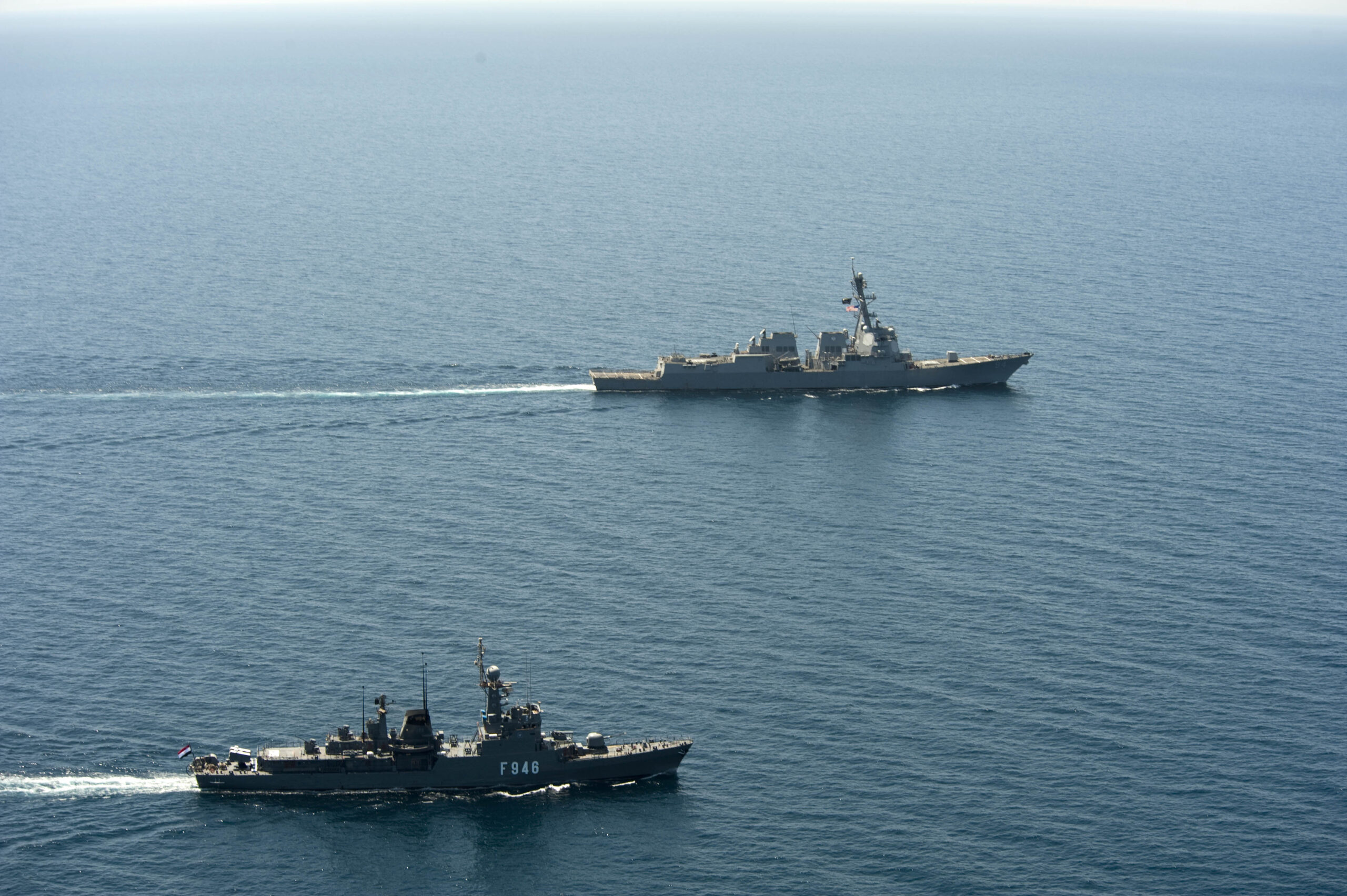The Persian Gulf is an emerging region of competition for the superpowers, scholars contend, and their rivalry holds important implications for its future.
On Tuesday, March 12, China, Iran, and Russia began a series of naval exercises around the Persian Gulf consisting of more than 20 vessels from the three countries. Just miles from the Strait of Hormuz, the crucial waterway through which nearly a quarter of the global oil supply flows, the states conducted live-fire drills to improve coordination and exhibit a show of force.
Lasting several days, the exercises are the sixth iteration of cooperation in the last six years and, along with the normalization deal struck with Saudi a year ago, another significant example of China’s increased engagement with Iran and, on a bigger scale, its presence in the region. Though its interest has largely been economic to this point, the growing military involvement shows that Beijing is willing to push in arenas that the United States has dominated for decades.
This newer dynamic is part of the global transition of the last thirty years, where American unipolarity subsides as Chinese influence expands. A key area to observe the development, a new Middle East Policy article argues, is the Persian Gulf, an “area that is arguably set to shape the western parameters of China’s Eurasia strategy as well as the emerging US strategic doctrines for the Indo-Pacific.”
Andrea Ghiselli and Anoushiravan Ehteshami call the region a “barometer of the evolving global power dynamics,” where responses to and engagement with and between superpowers can be studied. Its rapidly changing dynamics, central geographic role, and wealth from massive energy resources make it an important target for study.
As perceptions of US withdrawal from the Gulf and the West Asia and North Africa region (WANA) have grown with further Chinese involvement, that concern should be “taken with a grain of salt.” The scholars argue that “regional dynamics are being increasingly influenced by changes in the most important relationship in the world, the one between Washington and Beijing, and not solely by shifts in the US position.”
The two superpowers are still working out how to best assert their influence in the face of their competition.
Beijing, for its part, has sought to expand economic ties to support its own growth and convince regional governments to pursue development instead of rivalries. In theory, Ghiselli and Ehteshami explain, “this should reduce their reliance on external powers like the United States, which would translate into a decrease of American influence in the WANA region.”
For Washington, its longstanding political and security partnerships run deep, and the perception of its retrenchment “does not imply the end of the US status as the most militarily and economically powerful, and culturally influential, extraregional power.” The extensive network of relationships affirms the idea that it cannot be supplanted as a security guarantor.
While delicate, the competition does also open opportunities for regional states to benefit. Primarily, they may be able to use the leverage of China as a partner to gain concessions from the US, both unilaterally and multilaterally.
Unsurprisingly, that strategy inspires tension with Washington. Already, “regional governments are under growing pressure to limit the scope of economic, technological, and military cooperation with China, forced to choose between” the two powers.
With so many variables, especially the ongoing war in Gaza and the dissatisfaction with the responses from both the US and China, the evolving situation is difficult to judge. But their focus on its issues “clearly shows the new centrality of the Gulf and the WANA region to the relations between the two competing great powers.”
Among the major takeaways readers can find in Andrea Ghiselli and Anoushiravan Ehteshami’s Middle East Policy article, “The Persian Gulf’s Transition From American Unipolarity”:
- The Persian Gulf is a relevant barometer of the balance of global power and important to understanding how those powers act and interact.
- The region is important for its rapidly changing dynamics; history of involvement by external powers; massive energy stores; the agency of individual states created by that energy wealth; status as a trading partner to the US and China; and its central geographic role in Asia.
- China’s growing engagement, seen most notably in its brokering of normalization between Saudi Arabia and Iran in March 2023, has given rise to the idea of a “post-American” region.
- Regional states are looking to balance between the security guarantees of the US and the economic potential of China.
- The US approach to China can be broken into two periods:
- 1989-2017: a focus on “‘correcting’ China’s behavior within the US-led order”
- 2017-present: a focus on “containing China outside of that order”
- China has sought two key goals through its economic ties in the region:
- Support its own growth through energy supplies and new markets.
- Convince regional powers to change their focus from rivalries to economic development.
- Both states are finding it difficult to decide between growing their influence through the organic expansion of regional ties or outright competition with their counterpart.
- States in the region will have the opportunity to exercise influence on the rivalry.
- Powerful states like Saudi Arabia and Iran have tried to benefit from the strengths of both the US and China; for Iran, it’s using China to minimize US influence in the region and for Saudi Arabia, it’s about maximizing the number of partners.
- Regional policymakers can benefit from two factors:
- Using the leverage of China as a partner to gain concessions from the US.
- The “asymmetry of attention” in a relationship between large and small partners, amplified by China’s inexperience in the region.
- Though the competition will persist, both the US and China recognize the other’s importance to their own prosperity and stability.
You can read “The Persian Gulf’s Transition From American Unipolarity” by Andrea Ghiselli and Anoushiravan Ehteshami in Middle East Policy’s Spring 2024 issue.
